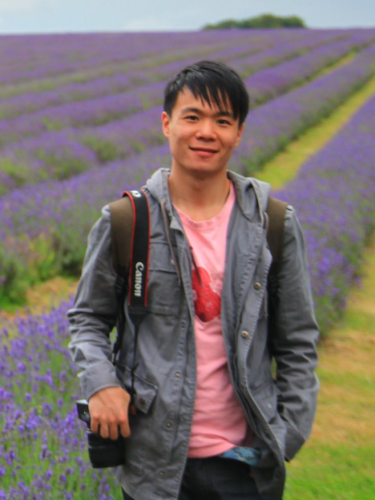报告题目:Opportunities for Porous Silicon in Nanomedicine
报告人:Nicolas Voelcker 教授
报告时间:2019年3月11日(星期一)上午10:00-11:00
报告地点:友谊校区老图书馆401会议室
邀请人:李林 教授
报告人介绍:

Nicolas Voelcker教授于1999年获得博士学位(RWTH Aachen),并在Scrippts Research Institute从事博士后工作3年,师从M.R. Ghadiri教授。2001年Nico加入Flinders University,并在2008年提拔为教授以及理学院副院长。2012年Nico加入南澳大学(University of South Australia),并于同年成为Mawson Institute院长。2017年Nico加入莫纳什(Monash)大学药学院(药剂药理学世界排名第二),并与同年成为Melbourne Centre for Nanofabrication (墨尔本纳米中心,MCN)院长以及澳大利亚联邦科学与工业研究组织(CSIRO)科研领头人。他同时还担任莫纳什大学工程与材料学院教授,以及 Leibniz Institute for New Materials(德国)客座教授, University Rovira I Virgili (西班牙)客座教授 。他还是澳大利亚皇家化学学会,和英国皇家化学学会理事。
Nico在生物纳米材料和生物表面材料上作出了许多贡献。在多孔硅纳米材料(Porous Silicon Nanoparticles, pSiNPs)的生物应用上Nic出了开创性研究(超过100篇高质量文章),并享有极高的国际声誉(多孔硅材料世界前五)。他还设计了多孔硅传感器,利用材料特质从而提高了信号强度。Nico还在纳米针以及纳米线上发表了多篇高质量文章。迄今为止Nico共发表了350篇学术论文,10本书以及25项专利,总引数超过7500次,年引用次数超过1100次/年,h-index 49,其中包括国际学术期刊Nature Communication, Nature Nanotechnology, Advanced Material, Advanced Functional Material以及Biometerial等。 Nico已经获得了十余项奖项,包括南澳年度科学家(2015)。Nico目前总共参与并获得了六千万澳币(三亿人民币)科研基金,其中作为第一申请人以及主导人获得了超过七百万澳币(三千五百万人民币)。
报告简介:
This talk will explore the application of nanostructured silicon including porous silicon and silicon nanowires in drug and gene delivery, optical and electrochemical biosensors and in regenerative medicine. These elemental silicon-based materials have high surface area of up to several hundreds of square meters per gram, facilitating loading of considerable amounts of bioactives. Second, pore size can be tailored over a wide range, spanning from the nano- to the microscale. Being able to 'dial in' a certain pore size allows for facile optimisation of topographical cues for attachment, guidance, proliferation and differentiation of target cells. At the same time, the rate of diffusive release of drugs can be tuned by adjusting the pore size. Third, the materials are biocompatible and biodegradable, with the nanostructured elemental silicon undergoing oxidative hydrolysis in aqueous medium at a rate that is easily tunable by means of the surface chemistry from hours to months. A diverse range of surface chemistries is available for this material, some of which are amenable to surface patterning, formation of surface-bound gradients and formation of silicon-polymer hybrid materials. Finally, thin films, membranes and particles of porous silicon display interferometric reflectance and photonic effects, which are responsive to binding of target biomolecules. This talk will first introduce nanostructured silicon material properties and fabrication and characterisation aspects, including describing strategies for nano- and microscale patterning and gradient formation. This will be followed by an overview of the work using porous silicon nanostructured films as optical and electrochemical transducers. Drug delivery applications for targeted cancer therapy, immunotherapy and the therapy of ocular diseases will be highlighted, and the use of nanostructured silicon in chronic wound diagnostics and theranostics will be discussed. Finally, the talk will provide an example of the use of porous carrier material for ocular cell therapy.
报告题目:基于微流控技术的血脑屏障芯片
报告人:彭勃 博士
报告时间:2019年3月11日(星期一)上午11:00-12:00
报告地点:友谊校区老图书馆401会议室
邀请人:李林 教授
报告人介绍:

彭勃博士在华中科技大学同济医学院取得本科学位,后分别在伦敦大学学院和新加坡国立大学取得硕士和博士学位,目前在CSIRO的Future Science Platforms以及莫纳什大学药学院工作。在高通量药物筛选、器官芯片技术、基于荧光探针的药物开发等领域具有深入研究,近几年在Angew、JACS、ChemBioChem、Org.Biol.Chem、Talanta 等期刊发表高水平文章,具有教学经历。
报告简介:
器官芯片(Organ-on-a-chip)是一门集合微流控,分子生物学,细胞生物学以及表面化学的新兴交叉学科与技术。器官芯片主要利用微流控芯片种植细胞,模拟人体器官环境(血流,呼吸以及3D组织结构),从而达到制造有功能的微型化器官,并用于生理学,病理学以及高通量药物开发的多种目的。此次的报告项目为血脑屏障芯片,我们将在微流控芯片上重组以人细胞为基础的血脑屏障,并以此为平台开展多项功能测试以及高通量筛选。